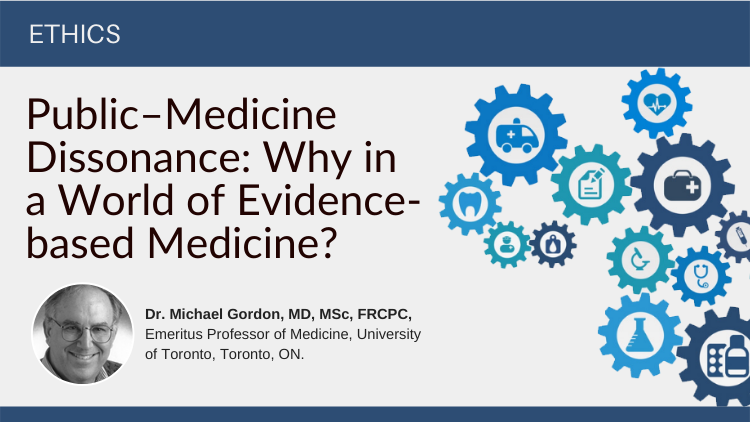Christine Oyugi, BSc
Managing Editor,
Geriatrics & Aging
On Friday, January 19th, the Baycrest Centre for Geriatric Care presented the first webcast of its continuing medical education (CME) accredited Grand Rounds program. The webcast featured an exhilarating one-hour talk on research, evaluation, and evidence-based medicine presented by Dr. David Streiner, Director of the Kunin-Lunenfeld Applied Research Unit.
Dr. Streiner began his presentation by providing a definition of the terms, research and evaluation. He defined research as the search for knowledge, where the emphasis is on the outcome and the underlying intention of the research is publication. The results from research are usually peer-reviewed and the recommendations from the study can be generalized to other patients and other institutions. Evaluations, in contrast, are not generalizable; usually they are targeted to local clinicians and administrators who use the results of the evaluation to change clinical programs within the given institution. The results in an evaluation are usually not peer-reviewed, but are vetted internally by the organization where the study took place. Often, the distinguishing factor between research and evaluation is that, in the latter case, there is no intention to publish the results of the study.
| Part of EBM is integrating individual clinical practice experience, with the best available evidence and the values and expectations that each patient brings to a clinical encounter. |
Since the 1940's, journals have reported an exponential increase in published research. In the field of mental health, for example, there are about 4,500 potentially relevant scientific papers published each year. A physician would have to read at least 12 articles a day to keep up with all the research. With the time constraints on clinicians, it would be difficult for them to read all published papers that are relevant to their particular field and those in other areas. However, the unfortunate consequence of clinicians not keeping up with the latest research is that clinical practice lags behind research, and is then based on the opinion of experts rather than on evidence. The incorporation of new interventions into clinical practice is chaotic, resulting in unnecessary variations in clinical practice.
The idea of evidence-based medicine (EBM) has been around for some time, but recently, there appears to be surge of interest in this topic. EBM is the conscious, explicit, and judicious use of the current best evidence for making patient care decisions. Part of EBM is integrating individual clinical practice experience, with the best available evidence and the values and expectations that each patient brings to a clinical encounter. Individual clinical experience should rely on the clinical skill and judgement of the clinician. This is vital in determining if the evidence applies to the patient being treated and, if it does, in determining how to apply it to that patient. Best evidence should always come from clinical research done with patients.
Physicians need a way to quickly evaluate studies and understand the potential applications of high-quality research to their clinical practice. This involves tracking down the best evidence by using electronic searches (e.g. medline). If judiciously used, EBM can replace currently accepted diagnostic tests and treatments with ones that are more accurate, effective, and better tolerated.
The Baycrest Centre for Geriatric Care is one of the leading institutions in the field of Geriatrics and Gerontology. The webcast is part of an ongoing health information strategy that aims to create and share knowledge to a broad spectrum of individuals and groups. To this end, Baycrest offers a number of on-line resources to facilitate your clinical practice. For more information on CME accredited courses, as well as other useful resources provided at Baycrest, please contact Mariana Catz, Chief Information Officer, at the Baycrest Centre for Geriatrics Care at (416) 785-2500 ext. 2503.
Acknowledgements
We would like to thank Mariana Catz and Stephen Tucker, from the Baycrest Centre for Geriatrics Care, for taking the time to be interviewed for this article.

